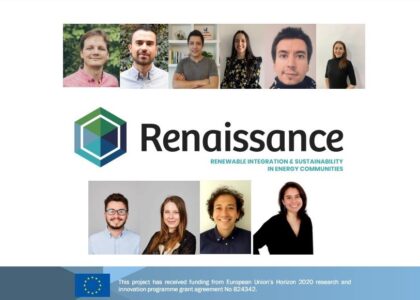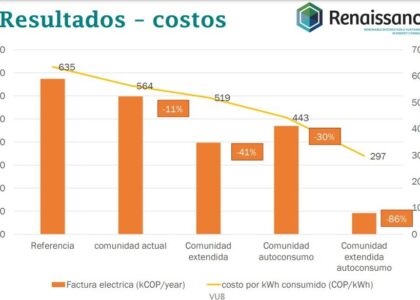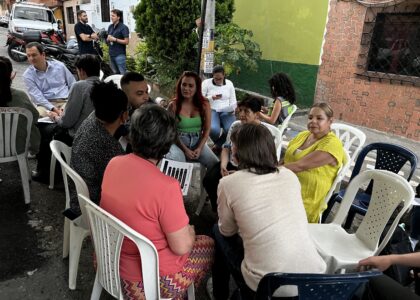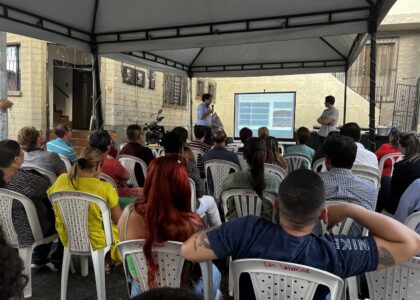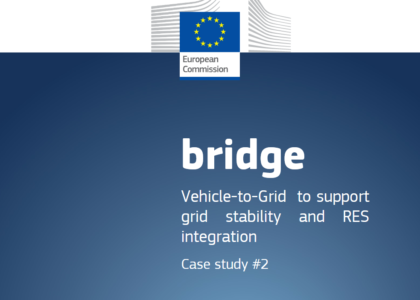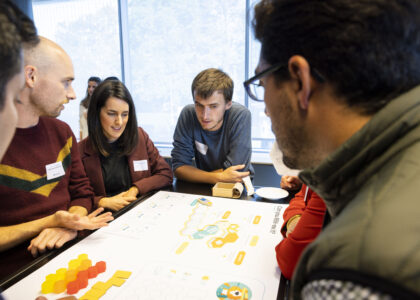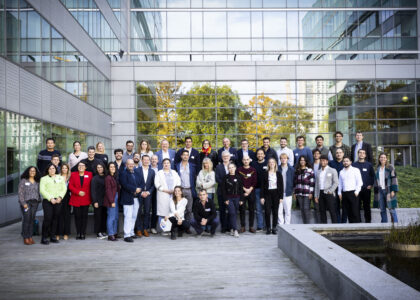by Juanita Giraldo, @EIA University Colombia – energy research unit on energy prosumer and energy transition
The energy community “La Estrecha” in El Salvador neighbourhood in Medellín tests the RENAISSANCE project approach and tools
How did a Medellín neighbourhood evaluate self-consumption in Colombia last summer? On July 18, 2022, the EnergEIA group of the EIA University and the Renaissance consortium of the European Union held a workshop with the participants of the “La Estrecha” solar community in the El Salvador neighborhood to find out what could be the best renewable energy self-consumption scenarios. The workshop presented the results of a collaboration between EnergEIA and Renaissance to promote energy communities in Colombia. The event had more than 40 attendees including representatives of the associated companies EPM, NEU, ERCO, the EIA University, the “Valle de Aburrá” Metropolitan Area and, as key stakeholders, the residents of the neighborhood who are participating in this pilot project.
The Renaissance project, seeks to foster scalable and replicable energy communities in the context of different regions worldwide through tools supporting local communities in the evaluation of options for shared energy generation and the mapping of the key actors.
Workshop Development
Part I: Definition of the objectives of the interest groups
Initially, a socialization was carried out among the participants to determine which were the most relevant objectives in relation to the supply and generation of energy, related to the deployment of the energy communities. For this, prior to the workshop, a survey had been carried out among the interest groups and these results were discussed during the meeting.
The results of this exercise focusing on each group’s main objectives were, in order of priority:
Settled citizens:
- reduction of the energy bill
- reduction of emissions
- energy efficiency
- reduction of investment costs
- employment/innovation/behavior change
Workshop participants agreed with the scoring of most of the criteria, but stressed that the importance of behavioral change should be increased as it is one of the biggest challenges because people are reluctant to change. They highlighted that one of the main interests is the contribution to the environment and that the investment cost characteristic is not yet relevant for them since none has had to incur any cost. Also, during the workshop a discussion arose about how new business models can be a source of new jobs, but technology and process automation can displace some jobs. An example is the case of smart metering that replaces the current employees who carry out consumption measurements.
According to the EIA team the residents’ had shown increasing interest in participating in the project and their willingness to learn more about energy-related issues.
Municipality/environmental authority “Valle de Aburrá Metropolitan Area (AMVA)
- energy efficiency
- inclusion
- self-sufficiency
- replicability
- reduction of the energy bill
- reduction of investment costs
In the workshop, the AMVA participants determined that the investment cost is not something that directly involves the environmental authority since it is something that affects the residents. They also highlighted that for them it is important to add air pollution and air quality to the environmental factor, since it is one of the main environmental challenges of the city of Medellin. Finally, they pointed out that they are not in charge of energy security, they are an articulating entity that must promote the provision of public services for all the people of the city, but it is not their priority.
From the weighting exercise carried out during the workshop, the final rating of the most relevant objectives for this stakeholder group is: energy efficiency, followed by inclusion, energy autonomy, replicability, bill reduction and investment costs.
Energy marketer and project developer ERCO and NEU
- innovation following
- energy efficiency
- replicability
- reduction of the bill
- investment cost
In the discussion they highlighted that in addition to these objectives, the strengthening and self-management of the community should be included, a very important characteristic for the deployment of these models.
Network operator EPM
- energy efficiency
- following the reduction of the bill
- emission reduction
- investment costs
- job creation
EPM considers the overall efficiency the main priority of any energy community and think that job creation is not only their specific priority, but it shall be the priority of all companies involved in the project. They also pointed out that, in the future innovation that is expected to be developed within EPM, more employees will have to be hired and it will be an opportunity for many people to improve their living conditions.
Part II: Analysis of scenarios for the deployment of the solar community
In the second part of the workshop, 4 scenarios proposed by Renaissance were presented, taking into account the current conditions of the pilot and the Colombian regulation. The scenarios seek to calculate the size of the power generation system that minimizes costs for residents and that is consistent with the needs of all stakeholders. For these calculations, real data on the consumption of the pilot participants and a projection of the photovoltaic production of the plant that is already installed in the neighborhood with a capacity of 20.21 kWp were used. Averages of the investment costs and the current purchase and sale cost of electricity were also used.
Scenarios
The La Estrecha Solar Community — El Salvador has an installation of solar panels that will work as a distributed generator, that is, they will inject all the energy they produce into the electricity grid. In addition, there are 25 households connected to the network. The money for the sale of energy from the distributed generator will be distributed equally among the participants as discounts on their energy bill. This is the base scenario (Scenario 1)
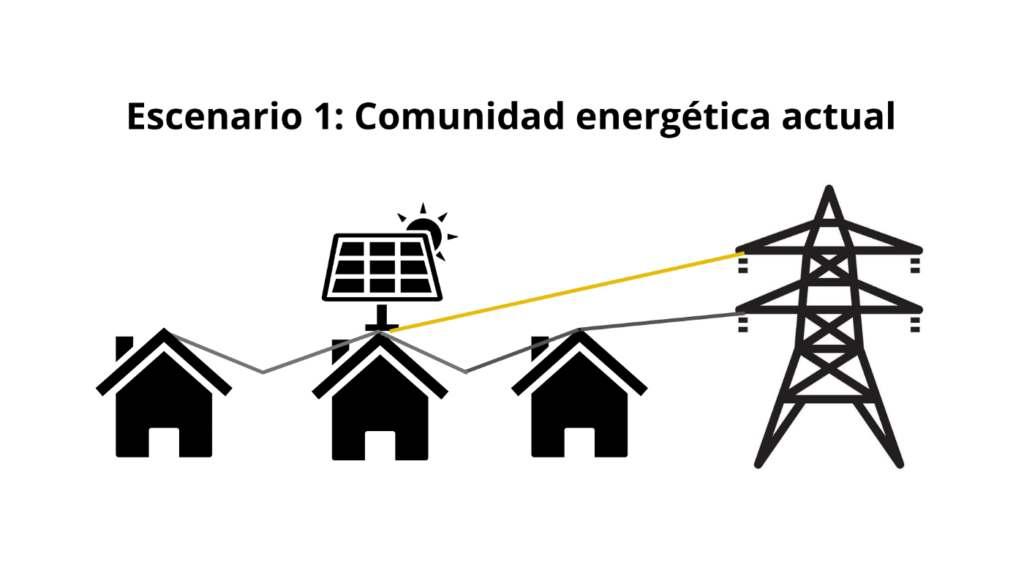
*
The following scenario (Scenario 2) is considered an expansion of the current installed capacity to reach the maximum benefit that can be used in the neighborhood. It should be noted that, in the current scenario, the participants did not incur any costs and everything was financed by the project, however, in Scenario 2 the additional investment that community members must make to expand the project is evaluated. current distributed generator and maximize the benefit for residents.
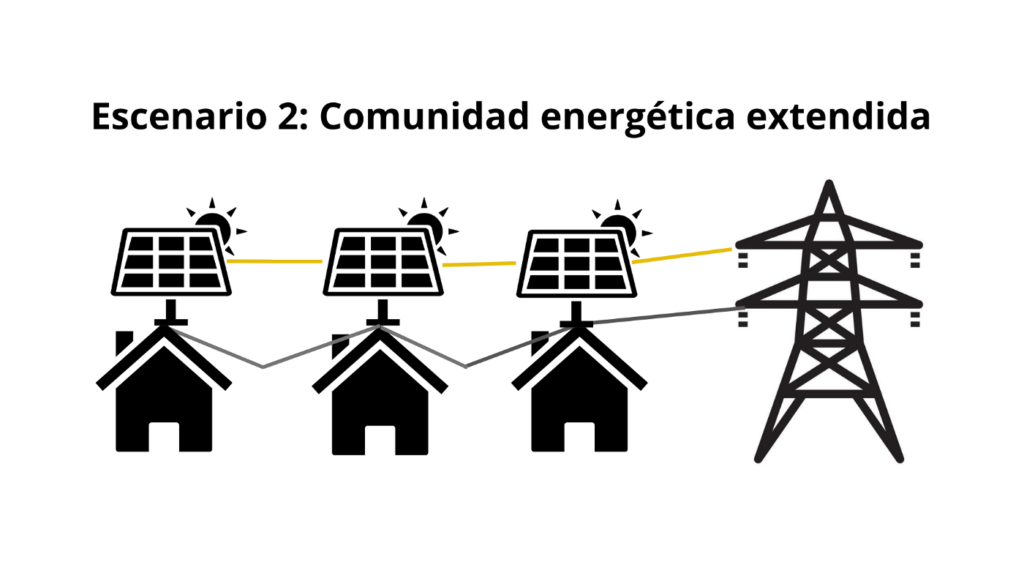
En el proceso de instalación y puesta en operación del piloto, se ha evidenciado la necesidad de una flexibilización regulatoria en las normas actuales de Colombia debido a que el esquema de generador distribuido no es el más apropiado para el despliegue de las comunidades energéticas por factores como: el precio de venta de la energía, la representación que deben tener los usuarios por una empresa de servicios públicos, la propiedad de los activos, etc…
Actualmente, en Colombia existe un esquema de generación de energía que favorece el autoconsumo denominado Autogenerador a Pequeña Escala (AGPE) que pueden adoptar usuarios residenciales. Sin embargo, una comunidad solar no puede convertirse en AGPE porque la autogeneración solo puede estar asociada a una única frontera comercial. Teniendo esto en cuenta, solo un participante del piloto obtendría los beneficios de los créditos de energía para suplir su consumo y lo demás tendría que repartirse como excedentes entre los otros participantes.
Dicho esto, se propone el esquema de AGPE comunitario, el cual permitiría que la planta solar esté asociada a varias fronteras comerciales y que los participantes puedan autoconsumir lo que se genera de forma equitativa. En el Escenario 3 se evalúa la comunidad energética bajo este esquema para evaluar cuales serían los beneficios para los residentes con estas condiciones propuestas a pesar de que sea una figura que aún no está permitida en Colombia. En este escenario, se considera la capacidad instalada que existe actualmente en la comunidad.
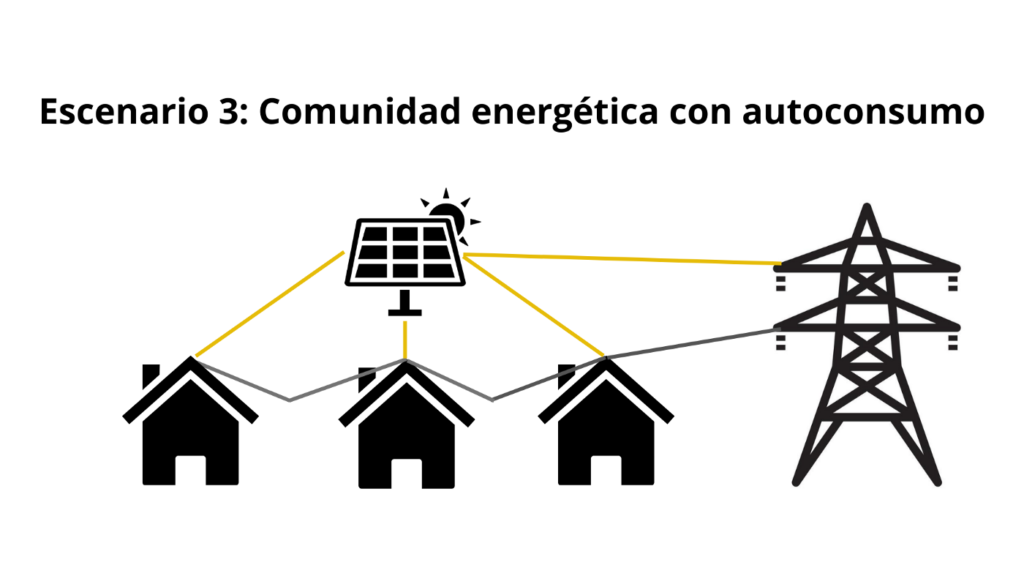
Finally, in the last scenario, the energy community scenario is evaluated under the community AGPE scheme, but extending the current installation as much as possible so that the greatest economic benefit is achieved.
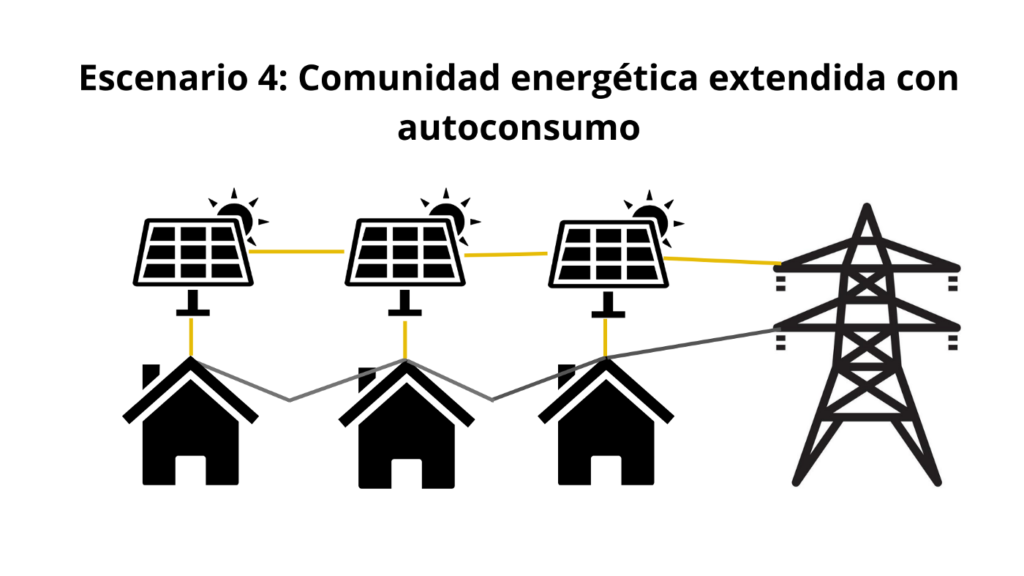
Results
Among the main results, it is highlighted that:
Current scheme
With the current scheme residents could achieve an 11% reduction in the price of the electricity bill; if the installed capacity were extended to 76 kWp (3.8 times the current installed capacity) it could be reached to a maximum of 41% profit. In turn, with regulatory flexibility that encourages community self-consumption, benefits of 30% could be achieved with the current installation and up to 86% by maximizing the installed capacity to 101 kWp (5 times the current installed capacity).
Self-consumption and self-sufficiency of the energy community
With the current operating model under the figure of the distributed generator, there is no self-consumption or self-sufficiency since everything produced is injected into the network. However, if the regulation is made more flexible and a community AGPE is allowed, values of up to 97% self-consumption would be reached, that is, the energy generated is consumed immediately and self-sufficiency would be achieved by being able to supply its energy needs 30 %.
Extended self-consumption
In the extended self-consumption scenario, self-consumption decreases to 33% because, by generating more energy, not all of it is consumed immediately, but a large part is injected into the network, but a self-sufficiency of 51% of the needs would be obtained. energy of the participating members.
Conclusions
Taking into account the data and results, it was determined that the scheme that most favors the solar community “La Estrecha — El Salvador”, taking into account the opinions of all the stakeholders involved, would be the Scenario 3 — Energy community with self-consumption.
This scenario takes into account the interests of:
- reducing the energy bill;
- favoring the environment;
- fostering innovation;
- low investment costs (taking into account that it is with the current installed capacity)
- high replicability
- energy efficiency
By relating all the results, this scenario has a higher score for all interest groups. Despite this, it is a scheme that cannot yet be implemented in Colombia, since the regulation needs to be made more flexible so that community self-consumption is allowed.
The main learning from this exercise is that with the current operating scheme of the “La Estrecha Solar Community — El Salvador” (Scenario 1), the most relevant objectives for stakeholders are achieved, including economic benefits for residents. However, to guarantee the replicability and relevance of these business models with the conditions of the Colombian context, it is necessary to relax the regulations that allow the entry of other schemes such as community self-generation that maximize the interests of the actors involved.
For more information contact the author of the original newspiece juanita.giraldo1@eia.edu.co
ORIGINAL VERSION (in Spanish):
Follow us:
